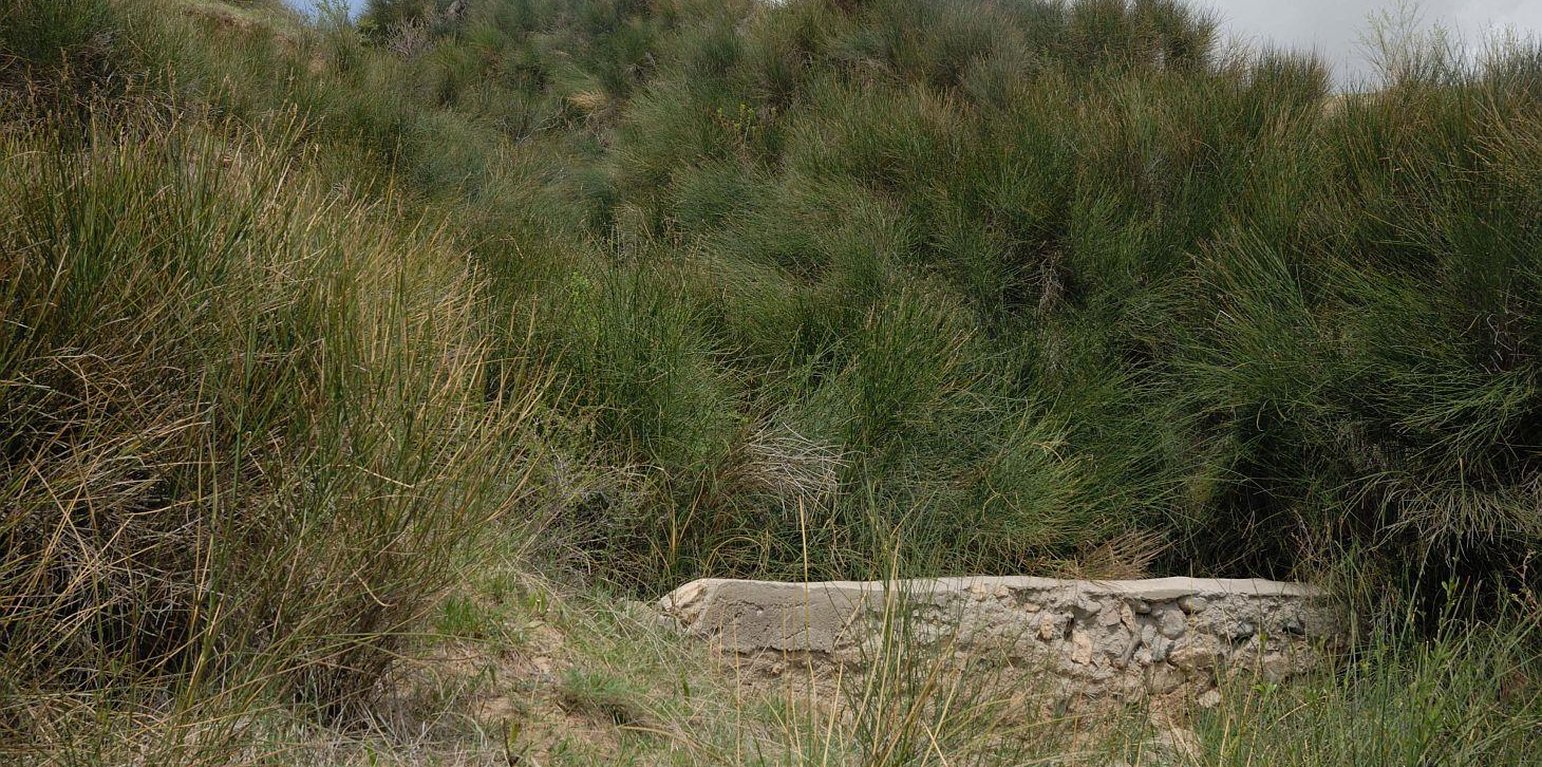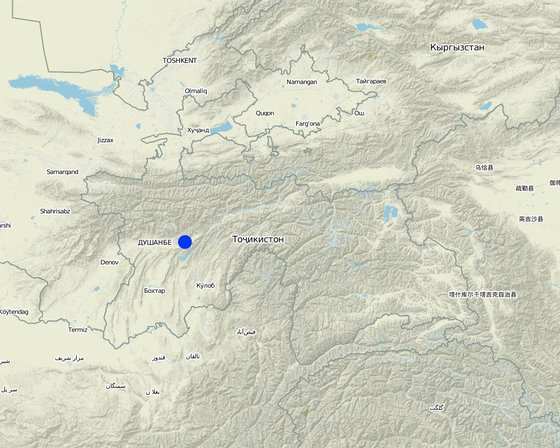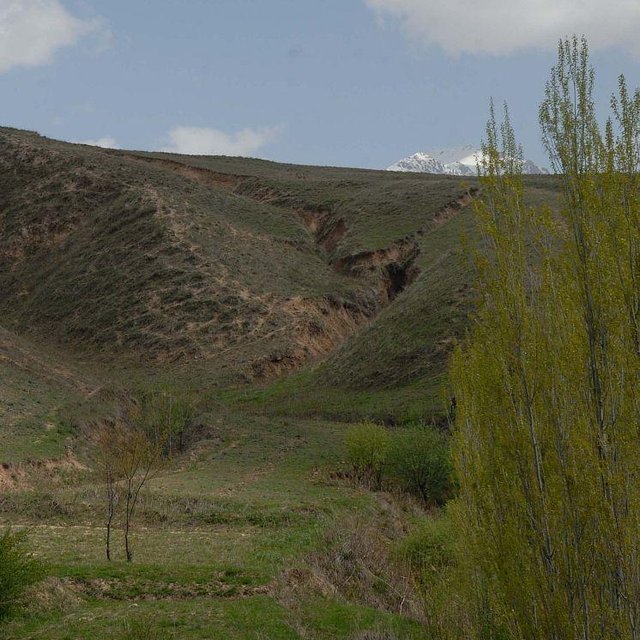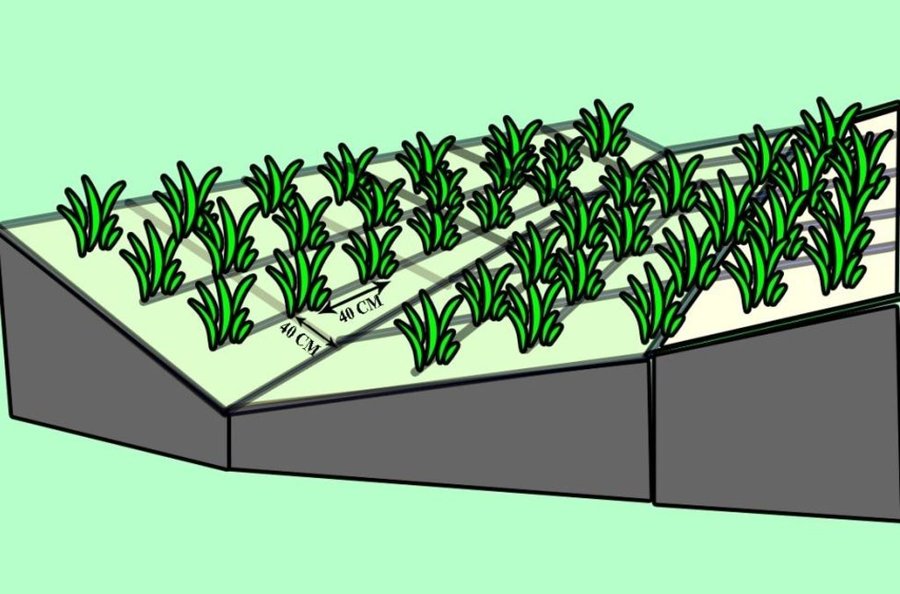



The research station of the Soil Science Institute tested the stabilisation of large gullies created by water erosion through the plantation of Spanish drok (Spartium junceum L). The plantation of Spanish drok was introduced in 1972 for the first time in the research field station. Spanish drok is a perennial plant and has the ability of spreading fast through its roots and also via seeds. Most of the gullies are covered with Spanish drok by now. In total 150,000 seedlings were planted at the research station.
Purpose of the Technology: Water erosion is highly threatening croplands by washing away the fertile topsoil. Severe gullies have formed on the hilly slopes. The research station of the soil institute therefore selected a number of gullies to test different techniques of rehabilitation.
Establishment / maintenance activities and inputs: In a first step a survey of gullies in the vicinity of the research station was conducted in order to determine an appropriate place for testing the stabilization. Spanish drok was planted and spread very fast through vegetative underground reproduction until the whole gully was covered. A gabion made out of stone and concrete was constructed at the foot of the gully. It contains a pipe to allow for outflow of excess water. Maintenance of the technology is less cost efficient and doesn't involve much cost associated activities.
Natural / human environment: The positive results of the implementation of this technology are very important as there is a great need for spreading it to other areas suffering from the same problems in Tajikistan. Spanish drok is generally not available in Tajikistan. Nowadays, the research station is providing seedlings for sale to interested farmers with a cost of roughly $ 0.40 per seedling.

Location: Javanon, Karsang, RRS, Tajikistan
No. of Technology sites analysed:
Spread of the Technology:
In a permanently protected area?:
Date of implementation: 10-50 years ago
Type of introduction





| Specify input | Unit | Quantity | Costs per Unit (Somoni) | Total costs per input (Somoni) | % of costs borne by land users |
| Labour | |||||
| Selection of area | Persons/day | 30.0 | 30.0 | 900.0 | |
| Planting of spanish drop | Persons/day | 36.0 | 30.0 | 1080.0 | |
| Construction of gabion | Gabion | 1.0 | 700.0 | 700.0 | |
| Construction material | |||||
| Stones | Gabion | 1.0 | 800.0 | 800.0 | |
| Total costs for establishment of the Technology | 3'480.0 | ||||
| Total costs for establishment of the Technology in USD | 773.33 | ||||
Spanish drok is used as firewood, increased availability
Prevents gullies from spreading and destroying production area
No need to take care of eroded land every year
Farmers are aware of erosion problems and benefits of Spanish drok